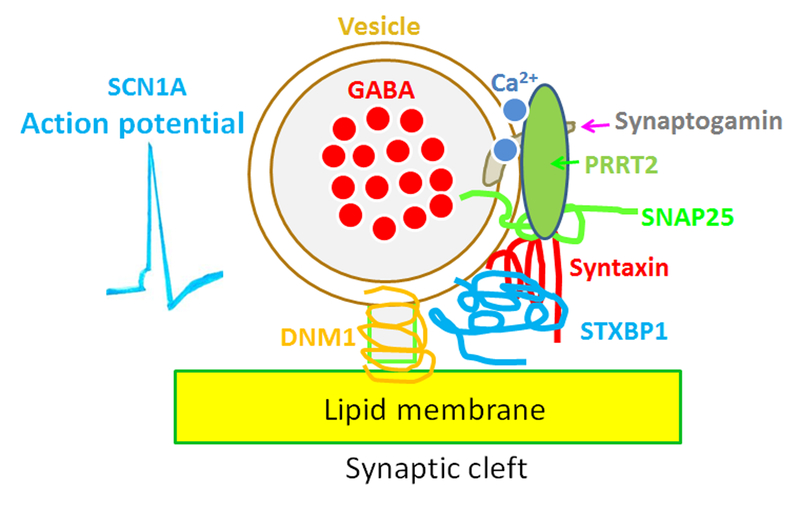Figure 3.
Diverse defects caused by mutations in different genes impair GABA neurotransmitter release. In a given neuron, opening of sodium channels encoded by SCN1A and influx of Na+ cause neuronal firing in which sodium channels are responsible for the rising phase of action potentials. Calcium enters the axon terminal during an action potential, causing release of the neurotransmitter into the synaptic cleft. Synaptogamin acts as a calcium sensor which binds calcium and activates vesicle fusion. Gene mutations that encode proteins involved in the process of vesicle release include but are not limited to PRRT2, SNAP25, syntaxin, STXBP1 and DNM1. Although the biological function of each gene still requires further study, it has been proposed that these proteins are essential for making up the complicated vesicle release machinery for vesicle docking, fusion and exocytosis.

